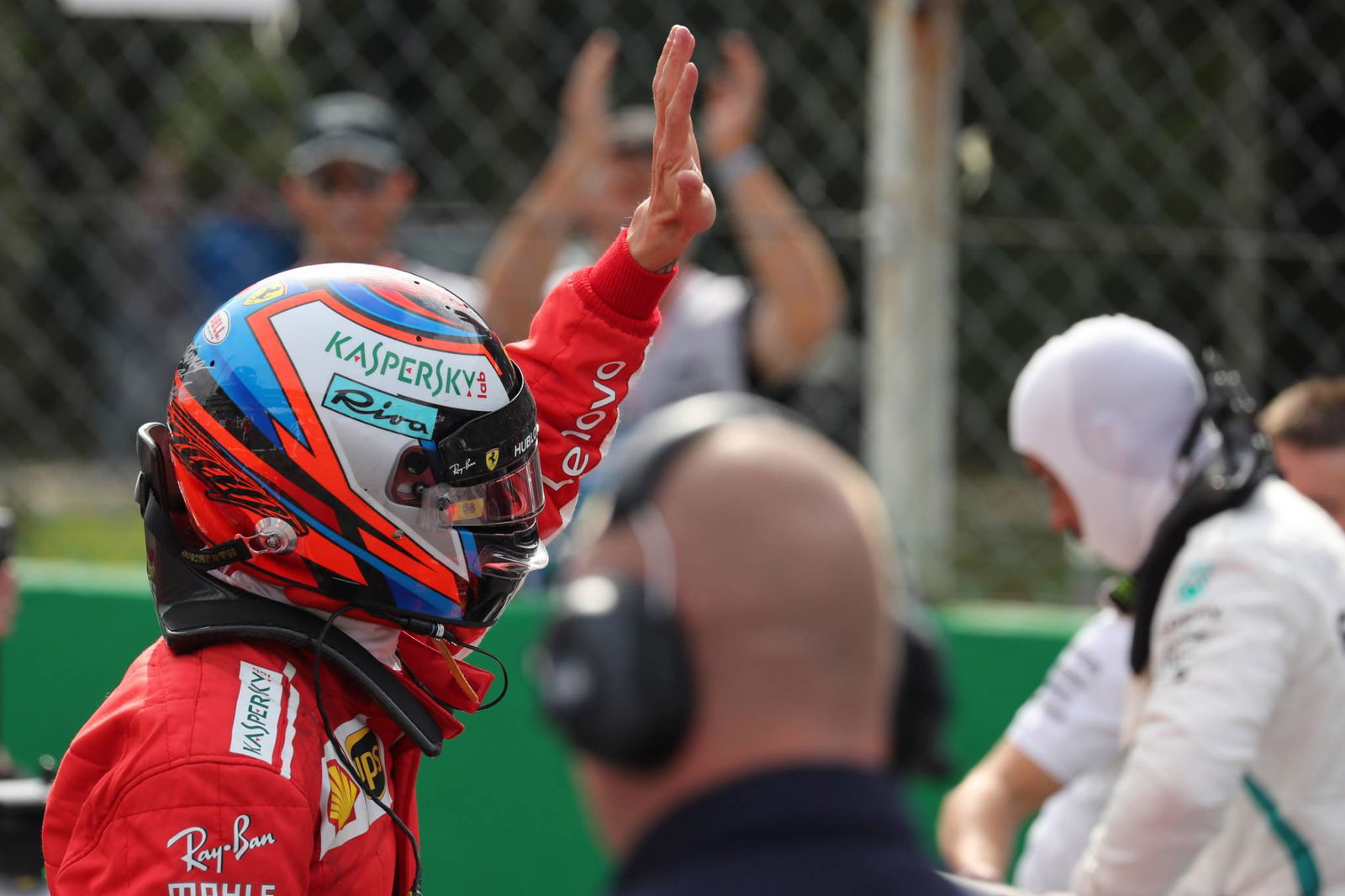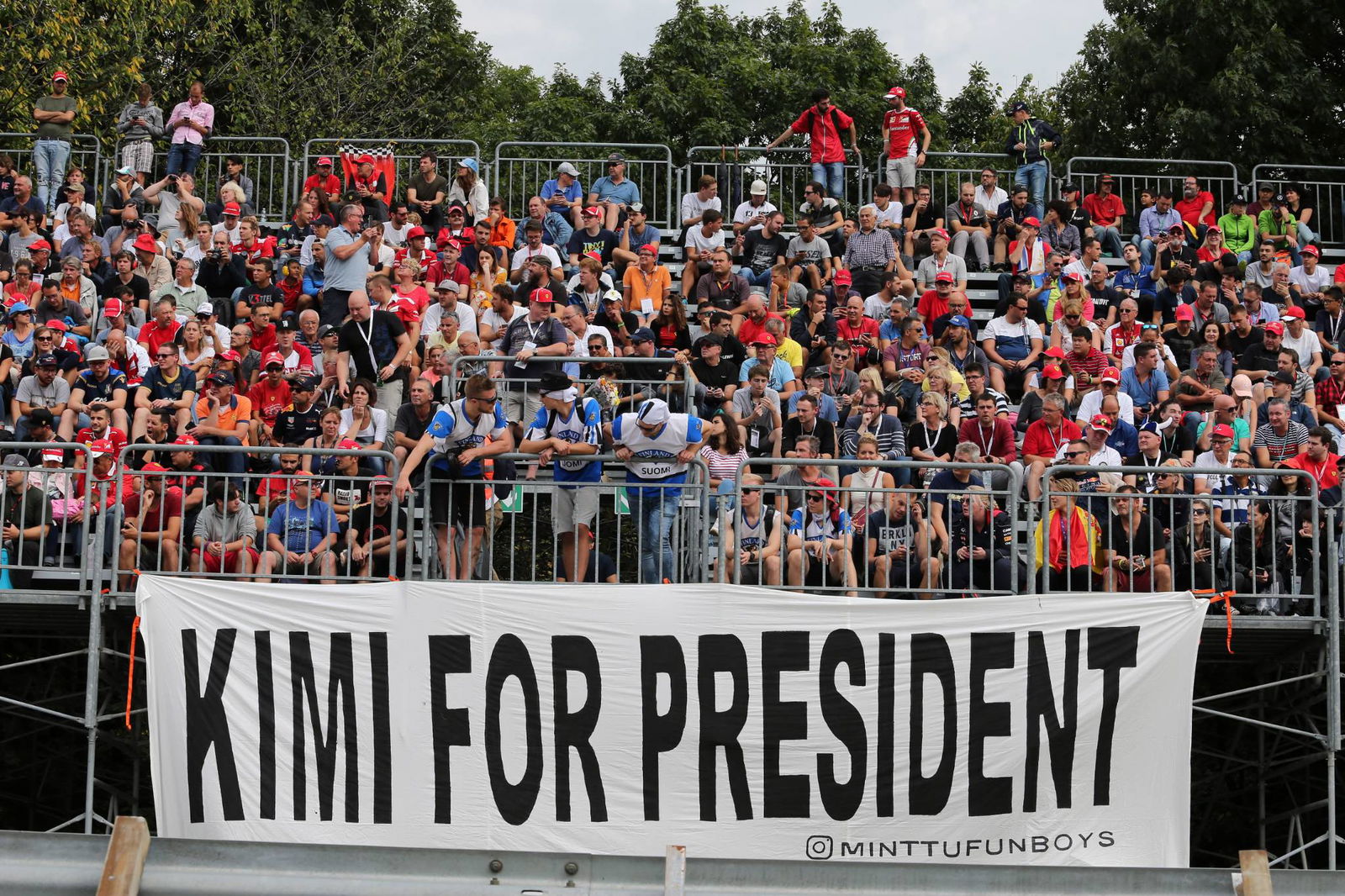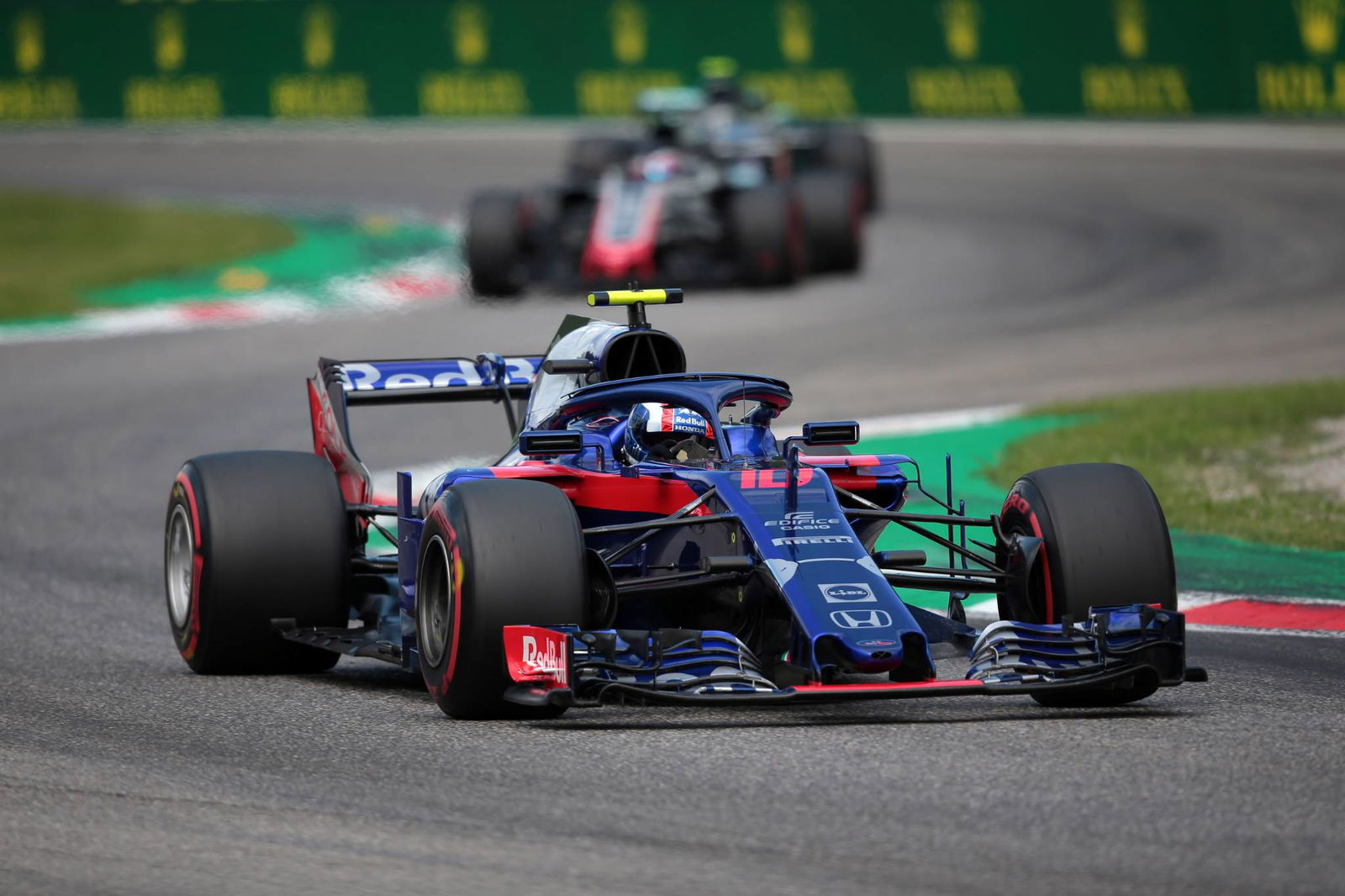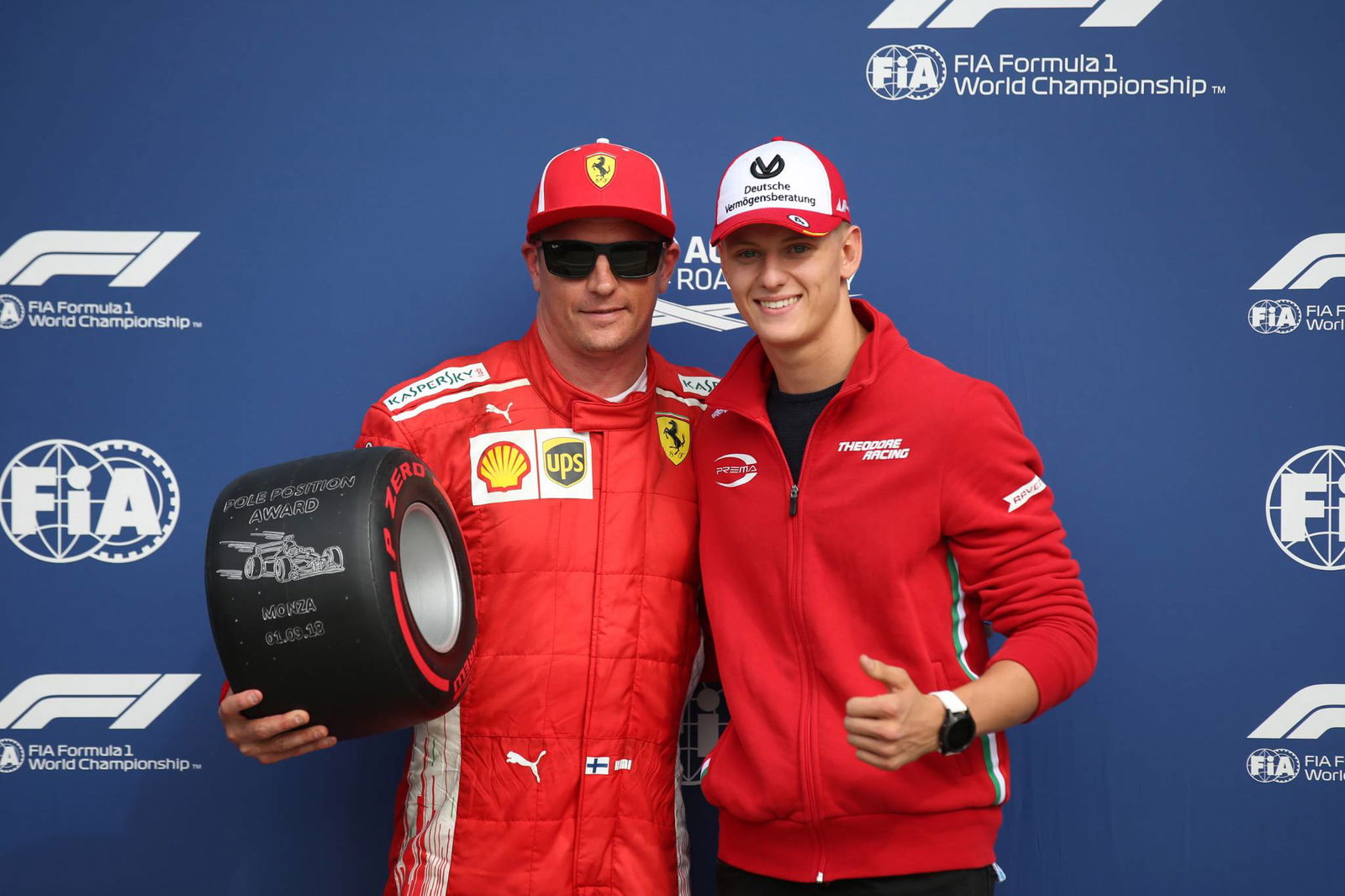Qualifying Analysis: How Kimi rolled back the years at Monza
There was something akin to the qualifying sessions of the mid-2000s on Saturday at Monza. It featured a thrilling fight for pole, a tight midfield battle, record speeds - and, to cap it all off, a Kimi Raikkonen pole position.
The last of those points has been a rarity in F1 over the last decade. When Raikkonen nicked P1 off Ferrari teammate Sebastian Vettel in Q3 at Monaco last year, it marked his first pole since the 2008 French Grand Prix - a gap of almost nine years.

There was something akin to the qualifying sessions of the mid-2000s on Saturday at Monza. It featured a thrilling fight for pole, a tight midfield battle, record speeds - and, to cap it all off, a Kimi Raikkonen pole position.
The last of those points has been a rarity in F1 over the last decade. When Raikkonen nicked P1 off Ferrari teammate Sebastian Vettel in Q3 at Monaco last year, it marked his first pole since the 2008 French Grand Prix - a gap of almost nine years.
And today, for just the second time in his F1 career, and for the first time in Ferrari colours, Raikkonen was able to grab pole position at Monza in front of the Tifosi, rolling back the clock with a stellar performance.
Just as he did when he grabbed pole by two-thousandths of a second back in 2006 for McLaren, Raikkonen’s charge saw him upstage Ferrari’s great title hope on home soil. That time around, it was Michael Schumacher, who was then hunting his eighth F1 title against young up-and-comer Fernando Alonso. This time, it was the man across the garage, Vettel, who he pipped to the post, pulling one-tenth of a second clear with his last-gasp effort.
The one-two result for Ferrari so many had predicted in qualifying given its power advantage over Mercedes looked in doubt until the final moments of Q3, though. Championship leader Lewis Hamilton felt he was on the back foot heading into the weekend at Monza, yet the Mercedes driver took provisional pole with a stunning initial effort in the final session, sitting six-hundredths of a second clear ahead of the last runs.
The power of the tow has always been discussed at Monza, with teams often trying to strategically plan their laps and place their cars in order to offer the driver behind a slipstream. At a track where straight-line speed is everything, it can offer a crucial boost in lap time.
Ferrari had sent Vettel - who, as the title fighter, was surely the man who would lead the charge for pole - out ahead of Raikkonen in Q3, theoretically giving the Finn a tow. Yet Vettel managed to go quicker on the first runs. His work as the man in front complete, surely Ferrari would flip the running order for the second run?
It did not. Vettel led Raikkonen out of the pit lane, trailing the Mercedes pair of Hamilton and Valtteri Bottas (Hamilton getting the tow). Both completed their warm-up laps without showing any sign of changing places. As the man ahead, Vettel’s best chance of a tow curiously lay with Hamilton.
Hamilton held the advantage through the first two sectors, but a rapid final sector from Vettel saw him pip the Briton to P1 by just 0.014 seconds, setting the Tifosi-packed grandstands off. Ferrari’s star driver had bagged its first pole at Monza in eight years.
The jubilation lasted mere seconds, though. Raikkonen followed Vettel across the line after going one-tenth of a second faster through the final sector, which, combined with a quicker Sector 1 time, was enough to put the Finn P1.

Raikkonen was his usual self after the session. There was no great outpouring of emotion, as expected had Vettel been the man on top. “It’s great for tomorrow, but it’s only half the job done and I think it couldn't be a better place to be on pole position,” Raikkonen said. “It’s our home grand prix, it’s in front of all the Tifosi, so hopefully tomorrow everything goes smoothly and we end up in the same positions.”
Explaining his pole lap, Raikkonen said: “Obviously there were a lot of games, who is going first, getting tows and this and that. But in the end, there was a train of cars and that’s enough.”
The power of the tow cannot be understated at Monza. On the straights, it’s a huge advantage, even if it leaves the car a little more unstable through the corners due to the wash off the car ahead. Toro Rosso driver Brendon Hartley offered a decent explanation of the power of the tow after the session.
“i think just on the straight line alone, you can gain four- or five-tenths. But what I should say is that a lot of that time, you lose in the corners,” Hartley explained.
“Yes, you have a lot less drag, but you also have less downforce in the corners. Being realistic about it, I’d say it’s two or three-tenths.” In a session as close as Saturday’s at Monza, though, such a gain is huge.
Hamilton - who ended up P3, less than two-tenths back from Raikkonen - also explained how the tow effect had worked its way down the order.
“Sebastian was just behind me so he had a good tow from me. I had a good tow from Valtteri and it obviously cascaded down,” Hamilton said.
“Here the tow effect is huge for everyone and getting the gap right is important. But at the end of the day, Kimi did the job. I don’t think I could have gone any quicker.

“I’m sure you can always look at the data and see there’s a little bit more but of course I’m pushing the car as hard as I can and I’m really happy with the performance, really, this weekend. We just need that little bit more.”
Turning attention to Sunday, the natural question after qualifying was whether Raikkonen would stand a chance of winning the race. Some questionable tactical calls over the last couple of years have appeared to work against him in favour of Vettel - think Monaco 2017 in the race, when Vettel got the overcut, or Bahrain qualifying this year when Raikkonen was sent out in traffic - so would he be allowed to win at Monza?
“If he’s starting from pole, I guess he’s allowed to win,” Vettel said after the session, batting back the question
“It’s a long race. Obviously he wants to win, I want to win. Hopefully one of us will win.”
But at this point in the season, the battle lines in the championship have already been drawn. It’s Vettel versus Hamilton - nobody else. If Ferrari can convert its qualifying advantage into the race, there is the potential for Vettel to gain at least 10 points on Hamilton (assuming the Mercedes driver finished third), cutting the gap to just seven heading into the flyaways. It’s a big opportunity - arguably one Ferrari cannot afford to pass up, in the context of the title fight.
The added twist in all of this for Raikkonen is that he is still fighting for his F1 future. New Ferrari CEO Louis C. Camilleri made his first appearance in the F1 paddock on Friday after taking over the role in the wake of Sergio Marchionne’s sudden passing, and said that there was still “no time frame” to make a decision on the line-up for 2019.
Raikkonen is doing everything right on-track to keep his seat with Ferrari for at least one more year. Even prior to Monza, he’s already scored more podiums this year than he did last, sits third in the championship, and is on course for his best season since rejoining the team in 2014. Arguably it's down to Vettel, not Raikkonen, that Ferrari doesn’t lead the constructors’ championship.
But the pole position at Monza proved Raikkonen still has that extra edge when it is required. The flame that burned so brightly in the early part of his career may have dimmed a bit, but it has the potential to spark up again when required.
And regardless of who wins on Sunday, it’s a big statement for Kimi to have made on Ferrari’s headline weekend.

